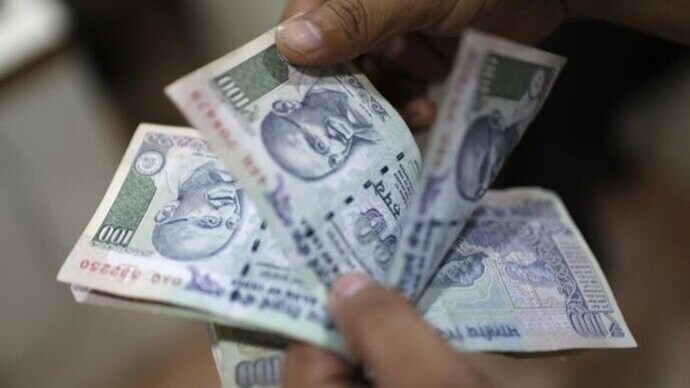
Rupee under threat from rising interest rates in U.S., Europe? There may be a way out
Amidt the rising interest rates in advanced economies, the Indian currency has weakened more than 10 per cent from Rs 74.30 against the US dollar on January 3, 2022, to Rs 82.30 on July 31, 2023.

By Samrat Sharma: Indians bear the brunt of high prices both directly and indirectly. If inflation rises domestically, retail inflation grows and the burden of high prices is directly passed on to the end consumers.
However, if prices grow in advanced economies, their central banks raise interest rates and that strengthens the dollar or their currencies and weakens the rupee, eventually. This, in turn, makes India’s imports expensive and prices within the country rise again.
One such event can be witnessed right now. Inflation in the US is cooling down from a 40-year high in October 2022, but it is still above the Federal Reserve System’s comfort level of two per cent. Around the same time, inflation in the European Union touched its lifetime high.
On the back of high inflation, central banks in both the US and the EU have been aggressively raising interest rates since 2022. The Fed raised the interest rate 11 times from 0.125 per cent in January 2022 to 5.375 per cent in July 2023.
“Inflation remains elevated. The Committee seeks to achieve maximum employment and inflation at the rate of two per cent over the longer run. In support of these goals, the Committee decided to raise the target range for the federal funds rate to 5.25 to 5.50 per cent,” the US Federal Reserve noted on July 26.
On the other hand, the European Central Bank raised interest rates nine times from zero per cent in January 2022 to 4.25 per cent in July 2023. “Inflation continues to decline but is still expected to remain too high for too long. It, therefore, today decided to raise the three key ECB interest rates by 25 basis points,” the bank said on July 27.
SLIDE IN RUPEE
While advanced economies were raising interest rates, the Indian rupee weakened more than 10 per cent from Rs 74.30 against the dollar on January 3, 2022, to Rs 82.30 on July 31, 2023. India is an import-intensive country and the depreciating value of the rupee significantly hurts the country’s current account. Also, high-interest rates in advanced economies make foreign investors pull their wealth from emerging countries -- such as India -- and invest in more lucrative markets.
"Foreign investment in India has been decent in the past few months. However, the investments would have been much higher if the Fed had not raised interest rates. Healthy growth projections of the Indian economy have also kept investments glued to the Indian markets despite advanced countries raising interest rates," says Ajay Kedia, Director, of Kedia Advisory. He adds that the fall in the rupee took place in the first half of 2022, but rising foreign exchange reserves supported the rupee in the following months.
India’s step to push the rupee for international trade holds a lot of importance amid various headwinds. After the Fed raised its interest rate by 0.75 percentage basis points in June 2022 — the largest such increase in almost four decades — India stepped up to push its domestic currency for international trade.
INTERNATIONAL TRADE IN RUPEE
The idea was that if more of India’s external trade gets invoiced in the rupee, the internal demand for the U.S. dollar would decrease, reducing the price of the dollar against the rupee.
“The introduction of an international trade settlement mechanism in the Indian Rupee will expand India’s trade with countries facing a shortage of the US dollar. It can also arrest the slide in the value of the rupee against the dollar and pave the way for the INR’s acceptance as a global currency,” says Dr Amitendu Palit, the Research Lead (Trade and Economics) at the Institute of South Asian Studies.
So far, the Reserve Bank of India has permitted 20 authorised dealer banks in India for opening 92 Special Rupee Vostro Accounts (SRVAs) of partner banks from 22 countries. These countries are Bangladesh, Belarus, Botswana, Fiji, Germany, Guyana, Israel, Kazakhstan, Kenya, Malaysia, Maldives, Mauritius, Myanmar, New Zealand, Oman, Russia, Seychelles, Singapore, Sri Lanka, Tanzania, Uganda, and the United Kingdom.
“Further, an MoU has been signed between the Reserve Bank of India and the Central Bank of U.A.E. on July 15, 2023, which would enable exporters and importers to invoice and pay in their respective domestic currencies enabling the development of a bilateral foreign exchange market,” Som Prakash, Minister of State in the Ministry of Commerce & Industry apprised the Parliament on July 26.
Meanwhile, India’s share in global trade is still less than five per cent, a long way from its currency being accepted globally.



